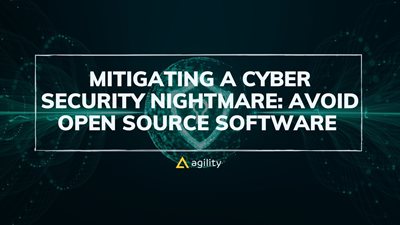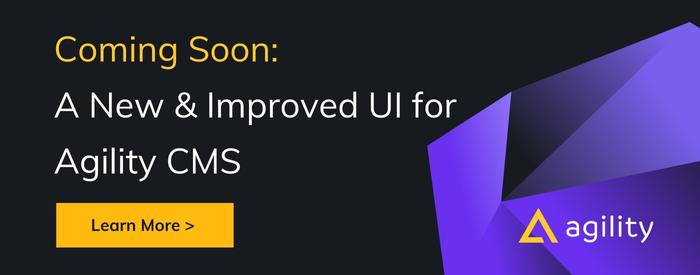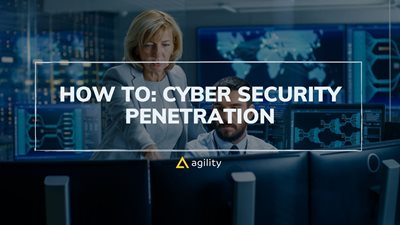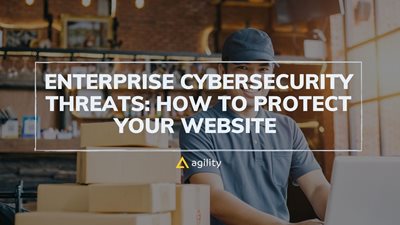Mitigating a cybersecurity nightmare: avoid open source software
Avoiding open-source software is the way of the future

Imagine you've just launched a new website and put in countless hours of hard work to make it the best it can be. You're finally starting to see some traffic come in, but then one day, you receive an email from a hacker who has taken over your site. They've inserted malicious code that is now stealing all of your customers' data! This nightmare could become a reality if you're not careful about using open-source software. This blog post will discuss why open source is such a security risk and how you can avoid it.
What is open-source software, and why should you avoid it?
Open-source software is software that is made available to the public for free. It's created by developers who volunteer their time and energy to write code that anyone can use. While this may seem incredible, it actually poses a significant security risk, which can turn away loyal customers who are engaged in the customer journey.
An excellent example of this is WordPress - one of the most popular content management systems today with over 74 million users worldwide! It's also an open-source project, meaning that anyone can contribute code to it. Several WordPress plugins that are currently in use contain vulnerabilities. This means that if you're using WordPress for your website, you're at risk of being hacked!
Not only WordPress, but any software that is made available to the public for free can be a security risk, including popular frameworks like Ruby on Rails and Node.js. This is because it's easy for hackers to find vulnerabilities in their code that they can exploit and use against you.
Perhaps even more troubling than this is how many large corporations use open source software without realizing the risks involved. We've seen several high-profile data breaches caused by hackers who took advantage of security flaws in open-source software in recent years.
Examples of recent cybersecurity breaches caused by open source vulnerabilities
In 2017, Equifax announced that hackers had breached their systems and stolen the personal
data of over 145 million customers. This breach was traced back to an Apache Struts vulnerability known about since March 2016 but left unpatched due to poor security practices at Equifax.
In 2018, hackers were able to steal the personal data of over 57 million Uber customers and drivers due to a misconfiguration in their Amazon S-bucket that was left unsecured. This breach could have been prevented if they had implemented more robust security practices around their cloud storage solution.
In 2019, Marriott announced that hackers had breached their systems and stolen the personal data of over 500 million customers. The breach was traced back to a flaw in an open-source database software called MongoDB, which allowed hackers access into Marriott's network without needing any authentication credentials at all!

In 2020, hackers were able to steal the personal data of over 100 million Capital One customers due to a vulnerability in an open-source web framework called Django. This vulnerability allowed hackers to access Capital One's network without needing any authentication credentials at all!
In 2021, hackers will be able to steal the personal data of over 500 million customers due to a vulnerability in an open-source e-commerce platform called Magento. This vulnerability allows hackers to access your network without needing any authentication credentials at all!
These are just some examples of recent data breaches that have occurred due to vulnerabilities in open-source software. There are many more, but these should give you an idea of how dangerous it can be if you don't take security seriously enough.
The dangers of using open source software
Using open-source software has become a common practice for many companies today because it's cheaper and easier than writing your own code. However, this doesn't mean you should use it without considering what could go wrong if someone discovered a vulnerability in the program.

There are several risks associated with using open-source software. Some of the most notable ones include:
1. Vulnerabilities
As we mentioned earlier, open-source software is often vulnerable to attack because it's not as well scrutinized as proprietary software. Hackers know this and are more likely to target open-source projects to steal data or inject malware.
2. Security breaches
Open-source software is often the target of hackers because they know that there are security vulnerabilities. When these vulnerabilities are exploited, it can lead to a data breach where confidential information is stolen.
3. Lack of support
If you're using open-source software and run into a problem, you may not be able to find someone to help you fix it. This can be especially problematic if your business relies on this software to operate. When you use open source software, there are no guarantees that it will be secure or function properly. Many open-source projects have failed spectacularly.
4. Lack of accountability
If an open-source project fails, no one can take responsibility for it. This means that you're left with the burden of dealing with any problems that arise from using their product or service. A good example would be a popular web server called Apache. In 2012, it suffered a major security vulnerability that enabled hackers to hijack websites and redirect traffic.
Open-source software is only as secure as its contributors. This means that if you're using an open-source library or framework, your website's security depends on how well the developers maintain their code. If they don't fix any vulnerabilities in time for hackers to find them out, then this could leave you vulnerable too!
It's also important to note that open source comes with shared responsibility. If you're using an open-source library or framework, then it's up to both parties (the developer who created it and yourself) to maintain its security.
5. Potential legal issues
If your business uses open source software without adequately checking for licenses (e.g., GPL), then you could be at risk of being sued by other companies who claim ownership over the code in question – even if they don't have any legal right to it.
6. Potential ethical issues
Using open-source software can be problematic from an ethical standpoint because you're not paying for the work of the developers who created it. This means that their labor goes unpaid and unrewarded, which is unfair. It's also considered theft by some people who feel that they should receive compensation when others use their work without permission.
Tips to reduce the risk of using open-source software
There are a few things you can do to reduce the risk of using open source software:
1. Use well-known, reputable projects
When possible, try to use well-known, reputable open-source projects with a large user base. This will help ensure that any vulnerabilities in the code are likely to be discovered and fixed quickly.
2. Use proprietary software
If you're not comfortable with the risks associated with using open source software, then you can always switch to closed source alternatives. While these products may be more expensive, they're typically more secure and come with support from the developer. For instance, if you are trying to introduce videos in your sales and marketing function, try using secure software such as StoryXpress (alternative to Vidyard) instead of using any open-source video platform.
The same holds true when working with client data. A leak of sensitive information about your clients might cause significant damage and ruin your image. Select customer service software that provides a high level of security.
3. Patch your software regularly
Make sure you keep your software up to date by applying security patches when they become available. This will help reduce the risk of a data breach or other cyberattack against your company.
Use strong passwords and two-factor authentication whenever possible: This will help protect your accounts from unauthorized access.
4. Use a security auditor
If you're concerned about the security of your systems, you can always hire an external security auditor to assess the situation and suggest improvements.
5. Use antivirus software
This will help protect your systems against malware that could compromise their security or cause other problems.
6. Invest in cybersecurity training for employees
Make sure you educate your employees about the risks of using open-source software. This will ensure that they can then make informed decisions about which products and services to use for their work.
7. Be aware of laws governing software licensing
It's essential to be mindful of any local or federal laws that may apply when you're using open-source software. These will often specify how it should be used and what restrictions there are (or aren't) on its distribution.
8. Use a code scanner
A code scanner can help you identify any open source software that's being used in your applications and websites. This will help you assess the risks associated with using these products and make informed decisions about whether or not to continue using them.
9. Don't be afraid to ask for help
If you're not sure how to use or deploy open-source software safely, then don't be afraid to ask for help from a cybersecurity expert. They can help you ensure that your systems are as secure as possible.
10. Have a plan in place for responding to a data breach if one occurs
Ensure that you have a plan in place for responding to a data breach if one occurs. This will limit the damage caused by cyberattacks on your systems and reduce the potential impact that they could cause.
11. Monitor cybersecurity news regularly
Keep up with what's happening in the world of cybersecurity so that you can stay informed about any threats or vulnerabilities that might affect your business. This will help you make informed decisions about protecting yourself against these risks.
12. Get a cybersecurity insurance policy
Make sure you get a cybersecurity insurance policy so that if something happens, at least some of the cost associated with it is covered by an outside source rather than coming directly out of your pocket.
13. Encrypt all sensitive data
Ensure you encrypt any data that might be vulnerable to a cyber attack. This will help reduce the impact of such attacks on your systems and make it more difficult for hackers to access or use them against you in malicious ways.
14. Opt for software that complies with security standards

With WordPress posing a serious risk to cybersecurity, enterprises are having to re-evaluate their CMS and DXP options. Opting for a CMS which provides a composable DXP and complies with security is vital to ensuring your organization is prepared for the future of the digital era and web 3.0
Agility CMS is an API-first enterprise-ready CMS that enables marketers and developers at companies worldwide to create and manage engaging content experiences for their customers. Having SOC 2 Type II compliance indicates that Agility CMS mitigates malicious activity, implements tools to recognize potential threats, and can protect customers and their data from threats within and outside the platform.
Furthermore, their integrations and implementation partners provide the composable DXP experience that everyone in the industry is raving about!
Employee training in cybersecurity
The importance of employee training in cybersecurity cannot be overemphasized. One of the best ways to protect your business from cyberattacks is to educate your employees about staying safe online. You can reduce the risk of becoming victims of such attacks by teaching them about the dangers of phishing attacks, social engineering, and malware. Some tips that you should cover include:
Use a password manager
A password manager can help you create and store strong passwords for all of your accounts. This will help protect them from unauthorized access.
Be careful about what information you share online
Be careful about what information you share online, especially if it's sensitive. Don't post anything that you wouldn't want others to see, and be sure to use strong passwords and privacy settings on all of your social media accounts.
Use a VPN
A VPN will protect you from any cyberattacks that require access to an IP address. For a small fee per month (usually under $5/month), utilizing a VPN for the added security is a no-brainer.
Use two-factor authentication
This will help protect your account from unauthorized access, even if someone manages to get your password.
Avoid clicking on links or downloading files from unknown sources
This is one of the easiest ways through which hackers access your systems. Be especially careful about opening attachments from emails you weren't expecting, as these are often used in phishing attacks.
Keep your software up to date
Make sure you keep your software up to date, as this will help protect you from any known vulnerabilities that might exist in them.
Report any suspicious activity
If you notice anything strange or unusual happening on your systems, report it to your IT department immediately. This could mean that someone is attempting to hack into your network.
Use a strong antivirus program
Make sure you use a good antivirus program to help protect your systems and software from malware and other online threats.
Create unique passwords for each of your accounts
This will help prevent hackers from gaining access to your accounts if they manage to obtain your password.
Be aware of social engineering attacks
Social engineering attacks are usually used by hackers to gain access to systems. Be aware of the signs of such attacks, and be sure to report any suspicious behavior.
Regularly backup your data
This will help ensure that you have a recent copy of your data in case it is lost or destroyed due to a cyber attack.
Invest in a solid firewall
Make sure that you invest in a good firewall to protect your business from cyberattacks. A strong firewall can prevent hackers from gaining access through open ports or other vulnerabilities on your network, which can lead them right into sensitive areas such as customer data and financial information.
Use two-factor authentication
This will help protect your account from unauthorized access, even if someone manages to get your password.
Deploy Zero Trust security model
Designed on the principle of “Never trust, always verify,” Zero Trust approach requires all devices and users, regardless of whether they are inside or outside an organization's network, to be authenticated, authorized, and regularly validated before being granted access.
Using these tips, you can reduce the risk that your business will fall victim to a cyber attack. Ensure that you stay vigilant against these types of attacks and learn how to protect yourself from them.
Final Thoughts
If you're building a new website or application, there are plenty of other options available to you that are just as good or better than open-source. To protect yourself from these risks, you should only use software that has been proven to be secure and avoid using open source software whenever possible.
If, for some reason, you can't avoid using open source software, then be sure to do your due diligence and research the project thoroughly before using it. Look for signs that it may be insecure, such as a lack of accountability among the developers, and be prepared to take action if you find any vulnerabilities.
You should also make sure that you're keeping your software up-to-date with the latest security patches so that you can reduce your risk of being hacked. Additionally, you should also ensure that your employees are well trained in cybersecurity and are vigilant against potential attacks.
Above all, remember that the best way to avoid a cybersecurity nightmare is to be proactive about security.
About the Author
Amrapali is a digital marketing consultant who blogs about business, and marketing at Bazaar Expert.




